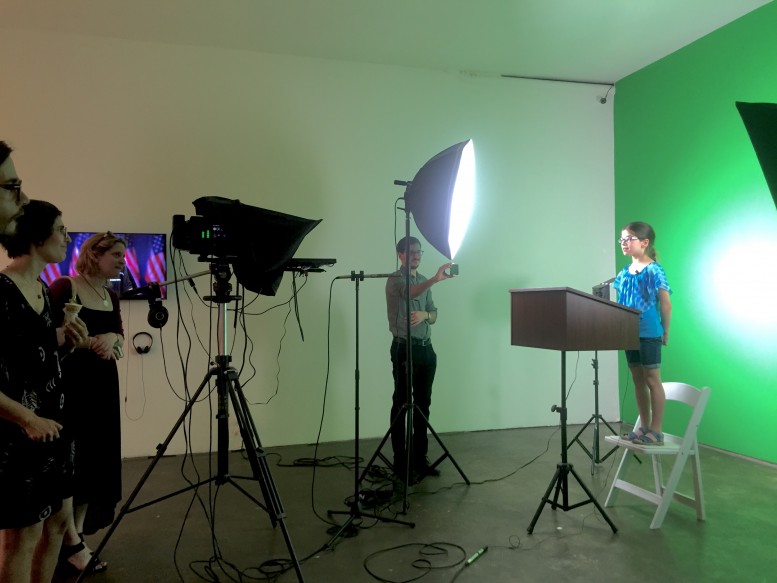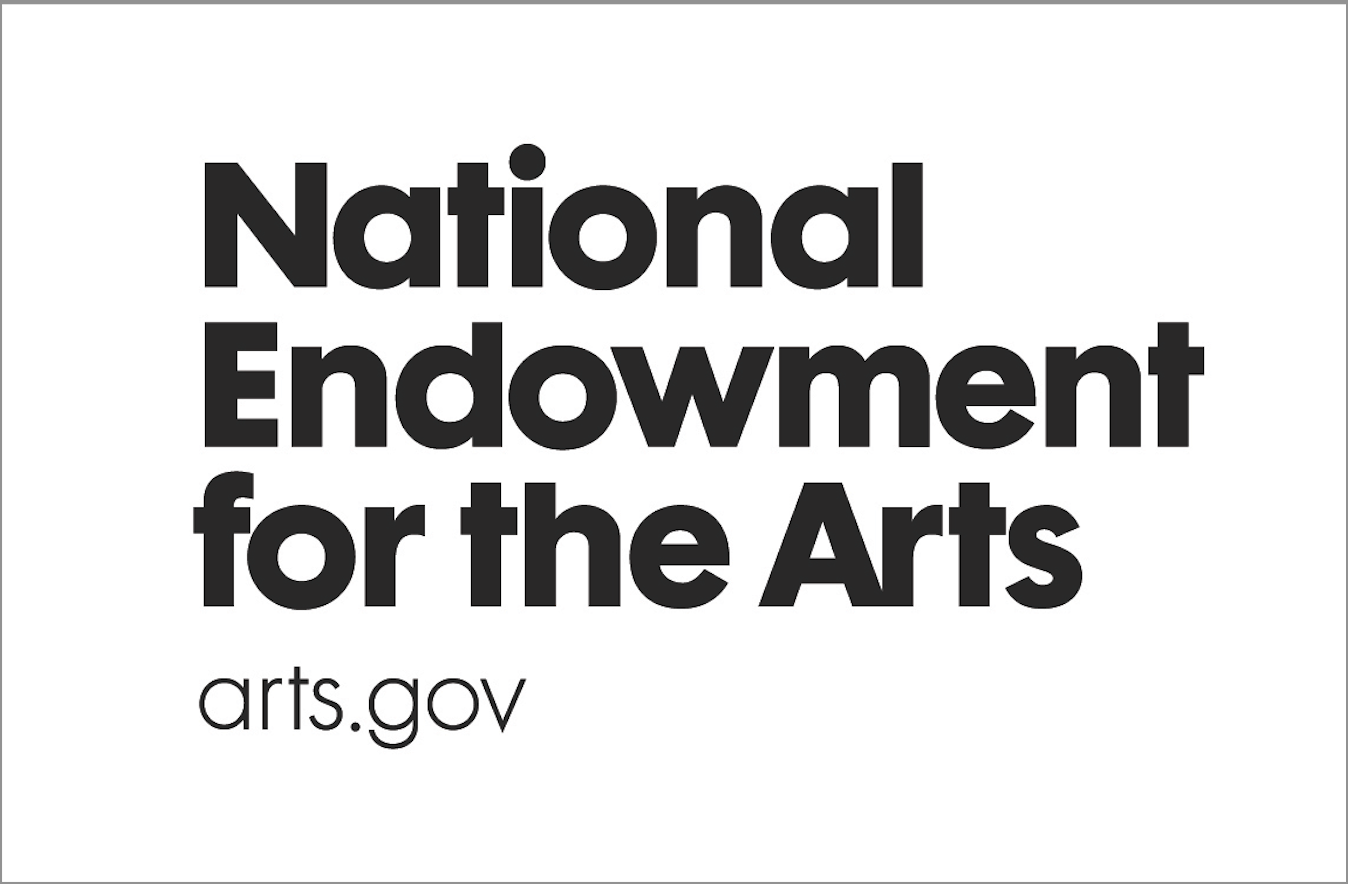“Campaign Office” is a new physical and digital installation by Jeremy D. Olson, our very own Institutional Giving Manager at the Civilians, who invites would-be candidates to self-nominate for President of the United States. Visitors are invited to launch their campaign by recording an announcement speech, generated automatically from 2016 campaign speeches, and filing paperwork necessary to be an official candidate for president. The recorded speeches are displayed on a screen in the gallery and are available online for viral consumption at www.campaignoffice.org.
Part of the “Of the People” exhibition at Smack Mellon in DUMBO, Brooklyn, which runs through the end of July, a show that reflects of-the-moment political opinions shaping the 2016 presidential race in the United States. Here, Jeremy reflects on what it means to launch dozens of presidential campaigns in just under six weeks.
“Of the People”
6/17 – 7/31
Smack Mellon
92 Plymouth St, Brooklyn, NY
Closing reception: 7/31 3-6pm
“Campaign Office” hours
Saturdays and Sundays 6/19 – 7/31 2-6pm
Milla Reichenberg in “Campaign Office.”
Thank you. Thank you. Thank you, New York. Thank you. And thank you to Brooklyn. You know lots of people have asked me over the course of last week, why here? Why here? Because everything started here for me. Everything started here for me. The confidence. The artistic education. The friends. The family. And the love that I’ve always felt for and from this community. When I decided to make this project, there wasn’t any choice. I had to come home and Brooklyn is home for me.
There are two systems at the heart of “Campaign Office,” one internal and one external.
The internal one is an algorithm that randomly re-combines transcripts of the seventeen major party presidential campaign announcement speeches given in the last year into new speeches. These generated speeches follow the logic of campaign announcements and can be quite moving orations, but also uncomfortably jump from topic to topic and voice to voice, making the perspective or philosophy of each speech hard to pin down (not unlike some of the candidates’ speeches themselves).
Visitors to the gallery each received their own unique speech, generated based on their responses to a survey. They then read their speech from a teleprompter, without rehearsal, and are filmed in front of a green screen. The resulting videos, with 2016 campaign backgrounds dropped in, are awkward and rousing calls to action that stumble in the same places the original candidates fumbled their words, over their generic rhetoric and their often uncanny language. As I have often found with chance operations in performance contexts, the alignment (or outright disagreement) between the context and randomized content is heightened — in this case, the apparent relationship between the speaker and their words can be at times moving or deeply uncomfortable.
The second system is an external one — section 6-153 of New York State’s election law, which details the requirements for write-in candidates for president, as well as its interpretation and implementation by the Board of Elections. In the gallery, newly announced candidates fill out forms to be a valid candidate for president: a certificate of candidacy, and a nomination by at least one elector who pledges their support to the candidate. (A candidate for president can also nominate a vice president, but this is strictly optional under New York State law). The election law in New York is “silent” on many things, including eligibility requirements for write-in candidates for president. It seems similar silence exists in Iowa, Minnesota and North Carolina, where “Deez Nuts” may have received as much as 10 percent of primary votes. New York State is more restrictive when it comes to electors and vice presidents, however, each of whom must be a real person with a matching photo ID, checked by a notary (I became a notary for the purposes of this project).
“Campaign Office” is a formal procedure that generates new, official presidential candidates out of the remnants of the old. By providing participants with a public platform and legal agency, “Campaign Office” suggests new aesthetic possibilities for the fiction of candidacy — protest, irony, or maybe a kind of hacktivism. I say “fiction” because the issue is not that anyone can or should be president: while technically true, in an era of $300 million campaign budgets, it is not really worth mentioning. Instead, “Campaign Office” critiques the campaign system by reenacting it, giving newly minted candidates a bit of agency they would not otherwise have had, and producing new candidates with a lot more transparency, humor, and irony than the old ones.
Our political system is so paralyzed by gridlock and dysfunction that most Americans have lost confidence that anything can actually get done. And they’ve lost trust in the ability of both government and big business to change course. This is not how our economy is supposed to work! This is not how our country is supposed to work! This is not the American Dream! And it does not have to be this way! This generation still has time to become great. We have saved the world before and we must save our country now — and we will do that by rebuilding the American Dream! I am proud to stand here among you and for you, the American workers who have sacrificed so much. To announce that I am making it possible for anyone to run for President of the United States.
[Applause]
For the last four or five years my work has dealt with various pervasive legal, social, and biological systems and the mundane ways that these systems impact our lives, the ways they shape who we are and what we do. What we think of as political speech — what these campaign speeches are constructed from — is a kind of mundane afterimage of our political system: there is a very limited set of words, turns of phrase, and modes of argument that we recognize as valid political speech (which is itself a legal category), and it is with this restricted set of raw materials that we attempt to express our complex and diverging beliefs.
Damien Davis in “Campaign Office.”
On the other hand, political speech is often more about doing something than about expressing anything. To say that you are running for president and to say the “American Dream is dead” doesn’t say as much about you or about America as it indicates that your campaign machinery is in full gear. Playing with this kind of performativity is a strategy I have often used in my work: by using a system as a kind of performance score, re-enacting it generates something new, something it was not intended to produce. A counterpoint to “Campaign Office” is a series of short films, “Talking Points,” in which I manipulated live footage of press conferences so that it appears that nobody speaks, while maintaining the logic and rhythm of live TV. What emerges are the in-between moments, the politicians’ and journalists’ highly trained gestures of composure, concern, frustration, and boredom. And in “Campaign Office,” those redacted words are mobilized and replicated by dozens of new candidates, whose unrehearsed performances reveal something about what those words really mean.
A related thread in my recent work is an interest in the power of texts and images that skirt the line between the sublime and kitsch. There is no doubt that this kitsch-sublime continues to be a major source of the imagery and rhetoric of political nationalism in this country: images of the great expanse of the American west, of descriptions of the US as a “shining city on a hill,” and the like.
The word “sublime” first appears in a text by a Greek rhetorician whose real name is unknown. As I understand it, for this author the sublime is an illogical movement in speech, something that breaks linguistic rules, in which the audience becomes more deeply moved or convinced than had the speaker followed convention. In fact, it seems that sublime rhetoric is so much about breaking the rules that it cannot be taught — it is at the best a kind of accident, a mistake, a Freudian slip. Something like this rhetorical sublime happens in the speeches being generated in “Campaign Office” as one authorial voice collides with the next, as the speech seems to teeter on the brink. The mismatch of a child reading the policy proposals of Ted Cruz and Bernie Sanders, or a passionless, deadpan treatment of Donald Trump lets something through that is not communicated by the text itself. These misalignments are not unlike the overlooked in-between moments in a televised press conference that reveal the carefully considered gestures of politicians, or the cracks and gaps in election law that make it possible for anyone to run for president, even children, non-citizens, and non-humans. Through those gaps, we can see glimpses of something else — the strangeness of our present moment and maybe new possibilities.
My dad told me as a young child, “Americans can do anything.” I believed him then and I believe it now. I know in your heart, you believe it, too. I am asking you to believe again. Believe in what we can do. Believe in what America can do. [Applause] Let’s be clear. This project is not about me. It is not about Republicans or Democrats. It is not about Donald Trump or anyone else. This campaign is about the needs of the American people, and the ideas and proposals that effectively address those needs. This project is driven by issues and serious debate; not political gossip, not reckless personal attacks or character assassination. This is what I believe the American people want and deserve. With your help, this message will ring from coast to coast, a message of liberty, equality, and justice. Today begins the journey to take America back.
Post Views:
1,126


